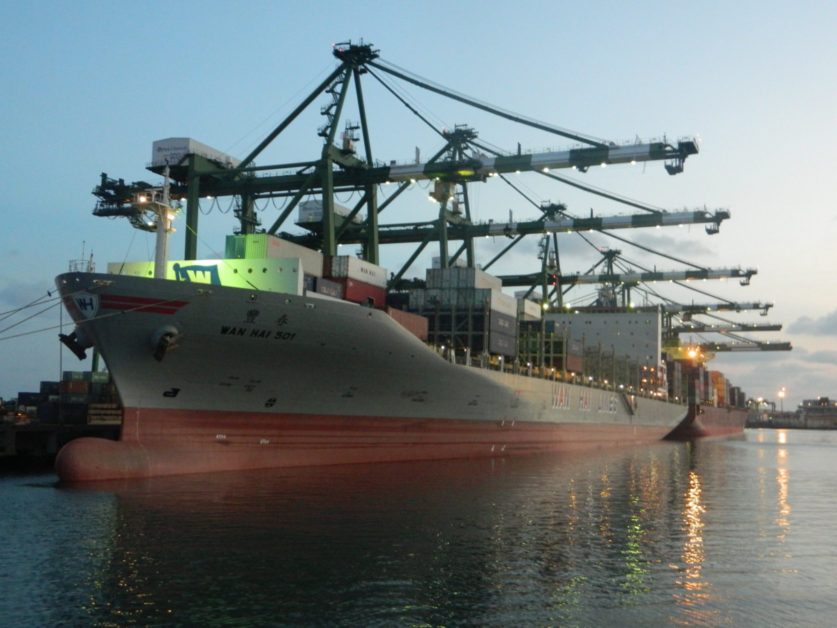Wan Hai Lines has confirmed that in response to falling cargo volumes, it has consolidated its four Asia-US West Coast into two services after replacing chartered vessels with newly delivered larger newbuildings.
Initially, the Taiwanese carrier had two Asia-US West Coast services, AA1 (Shanghai-Qingdao-Auckland-Shanghai), AA2 (Shekou-Kaohsiung-Ningbo-Auckland-Seattle-Shekou), AA3 (Hai Phong-Ho Chi Minh-Hong Kong-Shekou-Xiamen-Kaohsiung-Long Beach-Shekou) and AA5 (Qingdao-Shanghai-Ningbo-Long Beach-Shanghai).
The reorganisation of the routes has seen AA1 and AA2 withdrawn, while Oakland has been added to AA3. Calls at Qingdao and Seattle have been included in AA5.
Container News was informed that the newly built 13,100 TEU Wan Hai A07, which was delivered from Samsung Heavy Industries in October, has been deployed to the AA3 service. Joining the same service next week is a sister vessel, Wan Hai A08.
A spokesperson for Wan Hai told Container News, “We have consolidated our Asia-West coast of North America services into two loops, with newbuilds that have better fuel efficiency and unit cost. Some chartered vessels will be replaced and redelivered. In general, we adjusted our Transpacific services in order to respond to market demand.”
The company’s representative, however, refuted Taiwanese media reports that Wan Hai is considering following competitors in starting an Asia-Mediterranean service, where rates have remained steady.
Industry observers estimate that the steep decline in freight rates now means that the Asia-US West Coast lane is no longer profitable. Therefore consolidating services means cutting losses. Freight rates had peaked at US$17,500/FEU in October 2021, but are now languishing at around US$1,500/FEU.
Global economic uncertainties and inflation have affected demand for consumer goods, and the usual peak season in the third quarter did not materialise.
In the face of falling revenue, liner operators have taken steps to cut capacity. In September, MSC merged its SEQUOIA Asia-US West Coast service with the 2M alliance’s Jaguar/TP2 Asia-US West Coast service. CMA CGM has also withdrawn its Golden Gate Bridge route, an express Asia-US West Coast service.







